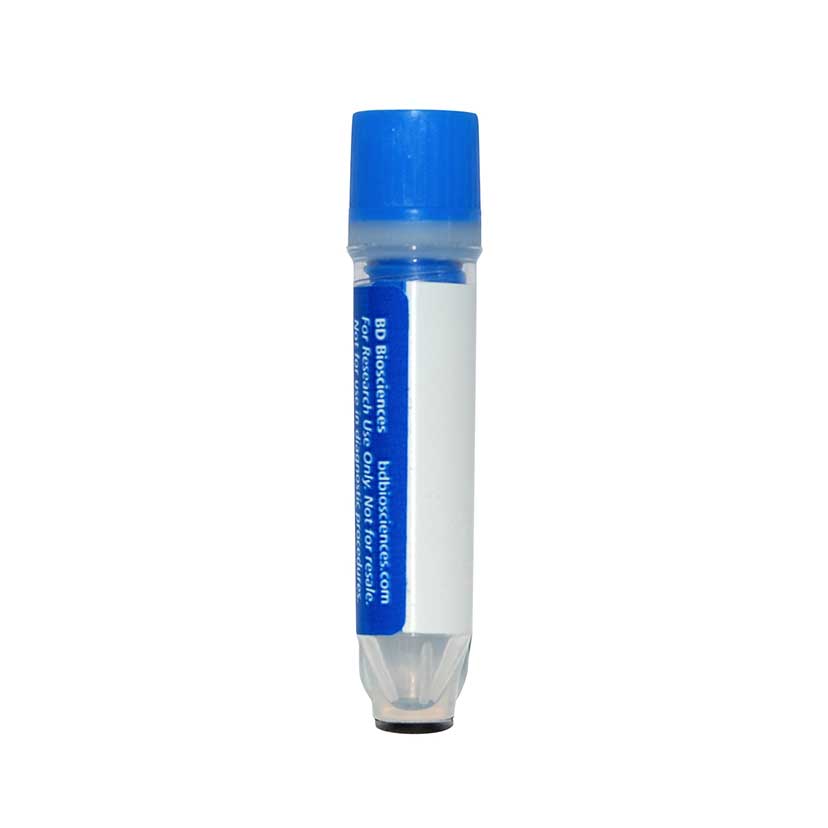-
Your selected location is
Middle East / Africa
- Change location/language
-
Reagents
- Flow Cytometry Reagents
-
Western Blotting and Molecular Reagents
- Immunoassay Reagents
-
Single-Cell Multiomics Reagents
- BD® OMICS-Guard Sample Preservation Buffer
- BD® AbSeq Assay
- BD® Single-Cell Multiplexing Kit
- BD Rhapsody™ ATAC-Seq Assays
- BD Rhapsody™ Whole Transcriptome Analysis (WTA) Amplification Kit
- BD Rhapsody™ TCR/BCR Next Multiomic Assays
- BD Rhapsody™ Targeted mRNA Kits
- BD Rhapsody™ Accessory Kits
- BD® OMICS-One Protein Panels
- BD OMICS-One™ WTA Next Assay
-
Functional Assays
-
Microscopy and Imaging Reagents
-
Cell Preparation and Separation Reagents
Old Browser
This page has been recently translated and is available in French now.
Looks like you're visiting us from {countryName}.
Would you like to stay on the current location site or be switched to your location?
BD™ AbSeq Oligo Mouse Anti-Human CD71
Clone L01.1 (RUO)


Regulatory Status Legend
Any use of products other than the permitted use without the express written authorization of Becton, Dickinson and Company is strictly prohibited.
Preparation And Storage
Recommended Assay Procedures
Put all BD® AbSeq Reagents to be pooled into a Latch Rack for 500 µL Tubes (Thermo Fisher Scientific Cat. No. 4900). Arrange the tubes so that they can be easily uncapped and re-capped with an 8-Channel Screw Cap Tube Capper (Thermo Fisher Scientific Cat. No. 4105MAT) and the reagents aliquoted with a multi-channel pipette.
BD® AbSeq tubes should be centrifuged for ≥ 30 seconds at 400 × g to ensure removal of any content in the cap/tube threads prior to the first opening.
Product Notices
- This reagent has been pre-diluted for use at the recommended volume per test. Typical use is 2 µl for 1 × 10^6 cells in a 200-µl staining reaction.
- Source of all serum proteins is from USDA inspected abattoirs located in the United States.
- Caution: Sodium azide yields highly toxic hydrazoic acid under acidic conditions. Dilute azide compounds in running water before discarding to avoid accumulation of potentially explosive deposits in plumbing.
- The production process underwent stringent testing and validation to assure that it generates a high-quality conjugate with consistent performance and specific binding activity. However, verification testing has not been performed on all conjugate lots.
- Illumina is a trademark of Illumina, Inc.
- Please refer to http://regdocs.bd.com to access safety data sheets (SDS).
- Please refer to bd.com/genomics-resources for technical protocols.
- For U.S. patents that may apply, see bd.com/patents.
Companion Products






The L01.1 monoclonal antibody specifically binds to CD71 which is also known as the transferrin receptor (TFR). This type II transmembrane glycoprotein is expressed on cells as a disulfide-linked homodimer comprised of 95 kDa monomers. CD71 is expressed on activated lymphocytes, monocytes, macrophages, brain endothelium, and most proliferating cells. The transferrin receptor is also present on early erythroid cells but is lost as reticulocytes differentiate into mature erythrocytes. CD71 is lowly expressed on normal resting lymphocytes and is upregulated during lymphocyte responses to antigens or mitogens. The transferrin receptor is essential for iron transport into proliferating cells. Through an endocytic pathway, the transferrin receptor mediates cellular iron uptake by binding and internalizing iron that is bound to transferrin. After releasing iron within the low pH endosomal environment, transferrin and its receptor can be recycled to the cell surface.
Development References (7)
-
Jefferies WA, Brandon MR, Hunt SV, Williams AF, Gatter KC, Mason DY. Transferrin receptor on endothelium of brain capillaries. Nature. 1998; 312(5990):162-163. (Biology). View Reference
-
Judd W, Poodry CA, Strominger JL. Novel surface antigen expressed on dividing cells but absent from nondividing cells.. J Exp Med. 1980; 152(5):1430-5. (Biology). View Reference
-
Larrick JW, Cresswell P. Modulation of cell surface iron transferrin receptors by cellular density and state of activation.. J Supramol Struct. 1979; 11(4):579-86. (Biology). View Reference
-
Loken MR, Shah VO, Dattilio KL, Civin CI. Flow cytometric analysis of human bone marrow: I. Normal erythroid development.. Blood. 1987; 69(1):255-63. (Biology). View Reference
-
Newman RA. Lymphoid receptors for transferrin.. Meth Enzymol. 1987; 150:723-45. (Biology). View Reference
-
Phillips JH, Le AM, Lanier LL. Natural killer cells activated in a human mixed lymphocyte response culture identified by expression of Leu-11 and class II histocompatibility antigens.. J Exp Med. 1984; 159(4):993-1008. (Immunogen). View Reference
-
Schwarting R, Stein H. Cluster report: CD71. In: Knapp W. W. Knapp .. et al., ed. Leucocyte typing IV : white cell differentiation antigens. Oxford New York: Oxford University Press; 1989:455-460.
Please refer to Support Documents for Quality Certificates
Global - Refer to manufacturer's instructions for use and related User Manuals and Technical data sheets before using this products as described
Comparisons, where applicable, are made against older BD Technology, manual methods or are general performance claims. Comparisons are not made against non-BD technologies, unless otherwise noted.
For Research Use Only. Not for use in diagnostic or therapeutic procedures.